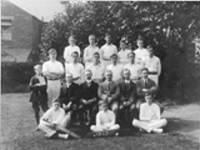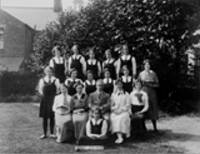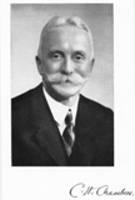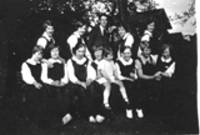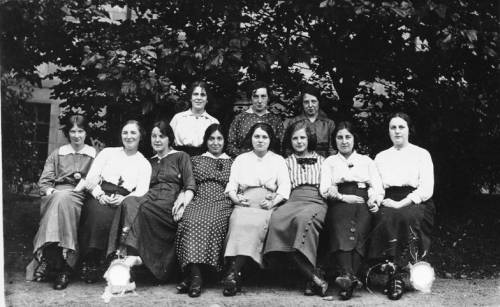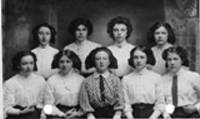
Technical School Group. |
On September 24th 1901 the new school opened with 37 pupils. The first Headmaster was Ralph Hubert Dickinson, who had also been Headmaster of the Wesleyan Day School on High Street West; his assistant was Mr W H N James. The head of the independent Art School was Mr J J Connor, who remained at the school throughout its transmission from Technical to Secondary to Grammar, until his retirement in 1930.
The subjects taught in the first year were Art, Cotton Spinning, Cotton Weaving, and Masonry & Brickwork. | 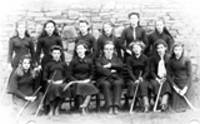
Girls Hockey Team with R.H.Dickinson |

